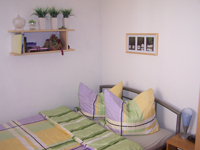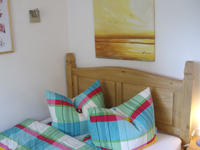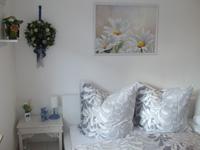Ferienwohnung-Koeln.com explains: Humboldt / Gremberg
Humboldt / Gremberg is located in the east of Cologne and has an area of 2,821.3 km². The population is around 15,480. Humboldt / Gremberg is located on the right bank of the Rhine and belongs to the Kalk district.

| District number | area | residents |
| 801 | 2,821.3 square kilometers | 16,000 |
The merger
Humboldt / Gremberg emerged from two former districts. In 1975 there was a territorial reform. Humboldt was founded in the era of industrialization. Gremberg is a neighboring town. This originated in the second half of the 19th century. But Gremberg was mentioned much earlier , namely in 1003. Humboldt was incorporated in 1888. In 1910 Gremberg was incorporated. Humboldt and Gremberg developed into workers' living areas .
Many factories were closed in the 1980s. In 1994 the districts were included in the "integrated action plan" for the purpose of renewal. The residential complexes should be modernized and new jobs created. There are well-preserved houses from the Wilhelminian era as well as renovated post-war buildings. With Humboldt / Gremberg are one of the most populous districts of Cologne .
Geographical
Today's drained area was once a swamp area of a lower terrace of the Rhine. There is a lot of loess and loam. The highest elevation is 70 meters above sea level. Humboldt borders north on Kalk and Vingst . Northeast is Ostheim the border. Westhoven forms the southeastern border to the district. The A 559 forms the border to the south with Poll and to the west it borders with the B 55 to Deutz ,
History
In 1975 an area reform took place and the two places were merged. Both places have a very different history, which is shown below.
History of Humboldt
The area around Deutz consisted only of meadows and fields in the middle of the 19th century. Subsequently, a factory was built in this area, today's Humboldtpark. The factory made explosives. The first houses for employees were built not far from the factory. The powder mill exploded in 1870 . The name of a street that borders, "An der Pulvermühle", is all that is left of it. The factory "Maschinenbau A.G. Humboldt" was located in Kalk. Housing was needed for the workers. The company acquired land. The plots were rectangular and homes were built. In 1875 houses with utility gardens were built along the Wattstrasse.
The factory ran into financial difficulties and debts. It was liquidated in 1884. The newly created settlement area then ceased construction. Lime was an industrial location. The rich workforce needed housing at the end of the 19th century. So the development was continued. Multi-storey apartment buildings were created, such as on Hachenburger Strasse. The congregation grew and an emergency church was built, St. Engelbert. The church was built in the Gothic Revival style by Eduard Endler in 1898/99.
History of Gremberg
There is a deed of donation in which Heribert von Köln 1003 described many benefices of the Deutz Abbey. The Deutz church with the tithe of Deutz, Kalk, Vingst, Poll, Rolshoven and Westhoven were among them. Furthermore, half of the forest in Grevenbruck, now called Gremberger Grosse. Another document states that on March 13, 1386, at the request of Archbishop Friedrich of Cologne and Duke Wilhelm II of Berg, the border between Kurköln and the Duchy of Berg was described. The area is described as Grevenberge. The Gremberger Hof has existed since 1663. The courtyard was built in the middle of the grove. The farm belonged to Deutz Abbey until secularization. The Gremberger Hof was secluded until the end of the 19th century. It was the only building in the entire area.
Lots of forest and greenery
There were only 20 residents there in 1828. Otherwise, Gremberg consisted only of fields and the forest. Between 1877 and 1880, the "Zwischenwerk IXb" was built on behalf of the Prussian administration. In 1900 the city of Cologne bought the Gremberger forest. The area had 302 acres. The purchase price was 400,000 marks. The former state forest became a local recreation area for Cologne citizens . A forest house was built in 1911. In 1886, the railway line on the Siegbahn was built. The Gremberger area got a connection with the Kalk-Süd passenger station. At the same time, it was separated from Vingster Ort.
.gif)
.gif)
.gif)
.gif)
.gif)
.gif)
.gif)
.gif)
.gif)
.gif)
The school
In 1886 a school was also built. The municipal administration commissioned the construction, since a population increase was expected due to the rail connection. The Gottfried Hagen accumulator factory went into operation in 1890. But the population did not go as quickly as expected. The newly built school therefore only started operations in 1896. Between 1900 and 1910, a few two- to four-story rows of houses were built for the employees of the Kalker and Vingster factories. Since there was no road connection for the Gremberger area, it was not a cheap place to live. It so happened that in 1909 93 apartments in this newly built area were still without tenants. In 1908, the Hope consumer cooperative chose the area as its headquarters. The cooperative consisted of an office and commercial building, a central warehouse and some production buildings.
After the incorporation the city administration planned a tram line . Construction has already started. Due to the First World War, however. After that there was no new admission. The Notkirche St. Engelbert was closer than the Vingster Church of St. Martin. In 1911, the Catholics of Gremberg were assigned to the parish in Humboldt . The dean Martin Köllen started the foundation of a church building association. A separate church was to be built in Gremberg. Factory workers' wages were not high. Therefore, there was not much agreement among the population. Martin Köllen then rented a room at his own expense. The cost was 100 marks a year over five years. In addition, he also paid 500 marks out of his own pocket for renovation work on the building. Other parishes donated the interior. The emergency church in the hall was named on the patron saint of his father, Antonius von Padua, on October 15, 1911. In 1914 St. Antonius became the rectorate of the parish of St. Engelbert and was given its own pastor.
Population of the district
At the beginning of the 1980s, the last factories in Kalk and in the town were closed. As a result, the population declined somewhat. According to a forecast, the number will continue to decline until 2025.
The population structure
The 15,219 inhabitants at the end of 2014 were 7548 female and 7671 male. Their average age was 40 years. The proportion of foreigners was 31% (comparatively, it is 17.7% in the Cologne urban area). 20.4% of households were community groups according to SGB II. The majority of the residents were Catholic.
Housing conditions in the district
There are 7663 apartments in Humboldt / Gremberg. 6% are publicly funded. The apartments have an average size of 60.1 m². According to statistics, there were 180 single and two-family houses and 901 multi-family houses.
Infrastructure and economy of the district
28% are shown in the land use plan as residential building space. The district is 2.8 square kilometers. 14% are green areas, 25% forest areas, 14% are commercial areas. 3% are shown as common use area, the rest is distributed on roads and railway facilities.
Traffic in the district
The subway connection was never realized, despite the 15,000 inhabitants. There has been an option for boarding the S-Bahn on Trimbornstrasse since the 1990s. There are also two KVB bus lines with the intersection at Gremberger Strasse / Rolshover Strasse. The district has a direct connection to the A 559. The exit is called Kalk / Poll, which causes some confusion. The Gremberg marshalling yard is located in the south of the grove.
Business and Industry
There are some large supermarkets in Gremberg . In Humboldt there are several small shops on Taunusstraße and near the St. Engelbert church. The Kippes company is the only industrial company. The Hagen company went bankrupt in the late 1980s. The technology park Hagen Campus is located on the former company site. There are companies from the field of biotechnology, from the medical-technical area, designers, software developers and companies from the consulting area. The "Rechtsrheinische Technologie- und Gründerzentrum Köln" is also located here. Business start-ups and young technology companies of future technology will find cheap laboratory and office space here. But also advice and support in building up and founding a company.
Schools and kindergartens
There is a vocational college and two primary schools. There are also some kindergartens and a secondary school was closed on July 31, 2011.
parishes
There is a community of the parishes of St. Marien and St. Engelbert. Köln-Kalk-Humboldt was the evangelical community. This was dissolved at the end of 2010 and merged to form the Kalk-Humboldt community. Gremberg is one of them.
Sights of this district
Particularly noteworthy are:
- A collective grave with a memorial for 74 Soviet prisoners murdered during the Nazi era in the Gremberger Grosse
- The parish church of St. Engelbert
- The Humboldtpark
- A brick church: the Gustav Adolph House on Hachenburgerstrasse
Book accommodation
Do you want to spend a few days in the cathedral city? We have the perfect accommodations for you! Ask right away at accommodation cologne for a non-binding offer! Messezimmer and the vacation rentals are very close to the fair! We look forward to your non-binding inquiry!






